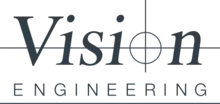Industry: Aerospace & Defense
Application: Visual inspection of complex PCB assemblies and machined components to AS9100 standards
The Challenge
A manufacturer of low-orbit aerospace communication systems needed a more efficient and user-friendly inspection tool to support AS9100 compliance. With only a handful of multi-million-dollar assemblies produced each month, early defect detection and accurate documentation were critical.
The team relied on conventional binocular microscopes, which were slow to operate, ergonomically poor, and inconsistent across users. Image capture for nonconformance reports (NMRs) required multiple steps using separate cameras and SD cards, increasing the burden on already documentation-heavy workflows.
The Solution
The company trialed Vision Engineering’s Mantis PIXO system in a shared inspection space, giving engineers and quality inspectors access to test it in live scenarios. Its ergonomic design, direct image capture, and simplified controls offered immediate benefits:
- Faster documentation: Instant image capture to PC removed the need for SD card workflows
- User flexibility: Quick adjustments meant multiple users could inspect parts without recalibrating the setup
- Detailed visibility: Enabled inspection of PCB features like 0201 resistors and trace routing, and detection of burrs inside 2.3 mm (0.091″) counterbores
- Space efficiency: Compact footprint suited the company’s constrained workstations
The Outcome
Feedback was overwhelmingly positive, with users highlighting clearer visuals, greater comfort, and faster reporting. The system aligned with AS9100 quality goals, particularly in reducing error rates and time spent on visual documentation for NMRs.
“This tool makes it easier for everyone – from design engineers to quality inspectors – to do quick checks and capture documentation without wasting time or adjusting complicated optics.” Quality Engineer
FAQs
Q: Does Mantis PIXO count as calibrated equipment under AS9100?
A: Mantis PIXO is not a calibrated measurement device by default. If used for dimensional verification, companies should assess whether calibration or traceable references are required for their specific workflow. For visual inspection and defect imaging, calibration is not typically mandated.
Q: Can images captured on Mantis PIXO be included directly in NMRs or audit reports?
A: Yes. Images can be captured directly to a PC and dragged into NMR files or inspection records, helping streamline documentation for AS9100 compliance.
Q: What type of parts can be inspected?
A: Typical applications include printed circuit board assemblies (PCBAs), trace routing, via inspection, 0201 components, burr detection in machined aluminum parts, plating defects, and fastener seating verification.
Q: How many users can share one system?
A: Mantis PIXO requires minimal adjustment between users and suits multi-user environments. It is particularly useful in shared quality labs or mixed-role engineering spaces.
Q: Is Mantis PIXO suitable for cleanroom or controlled environments?
A: Yes. It can be used in clean manufacturing zones provided standard handling and cleanliness protocols are followed.
Supporting Defense-Grade Inspection
Vision Engineering systems are used by defense and aerospace suppliers worldwide to support reliable visual inspection and measurement of mission-critical parts. From inspecting fine-pitch solder joints to checking machined components for burrs and plating issues, our ergonomic, screen-based systems help reduce human error and streamline documentation in AS9100 environments.


